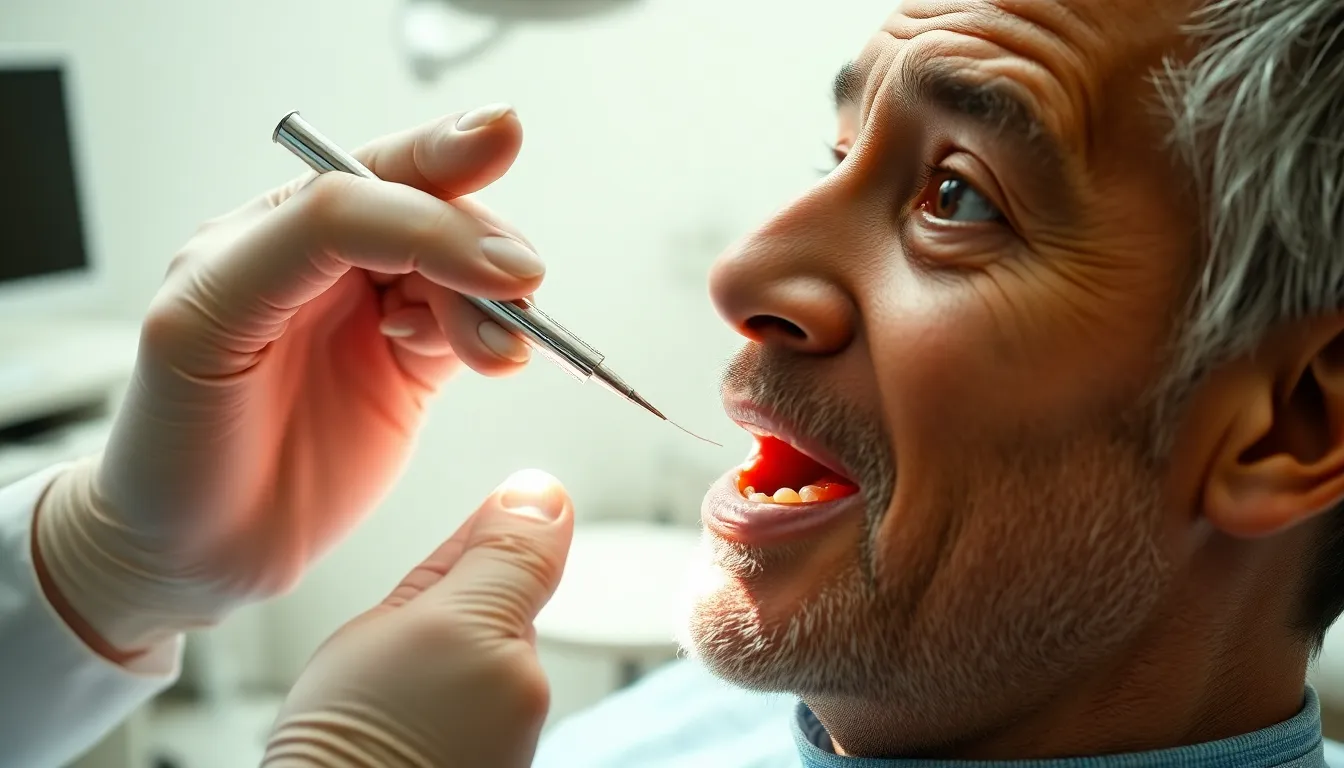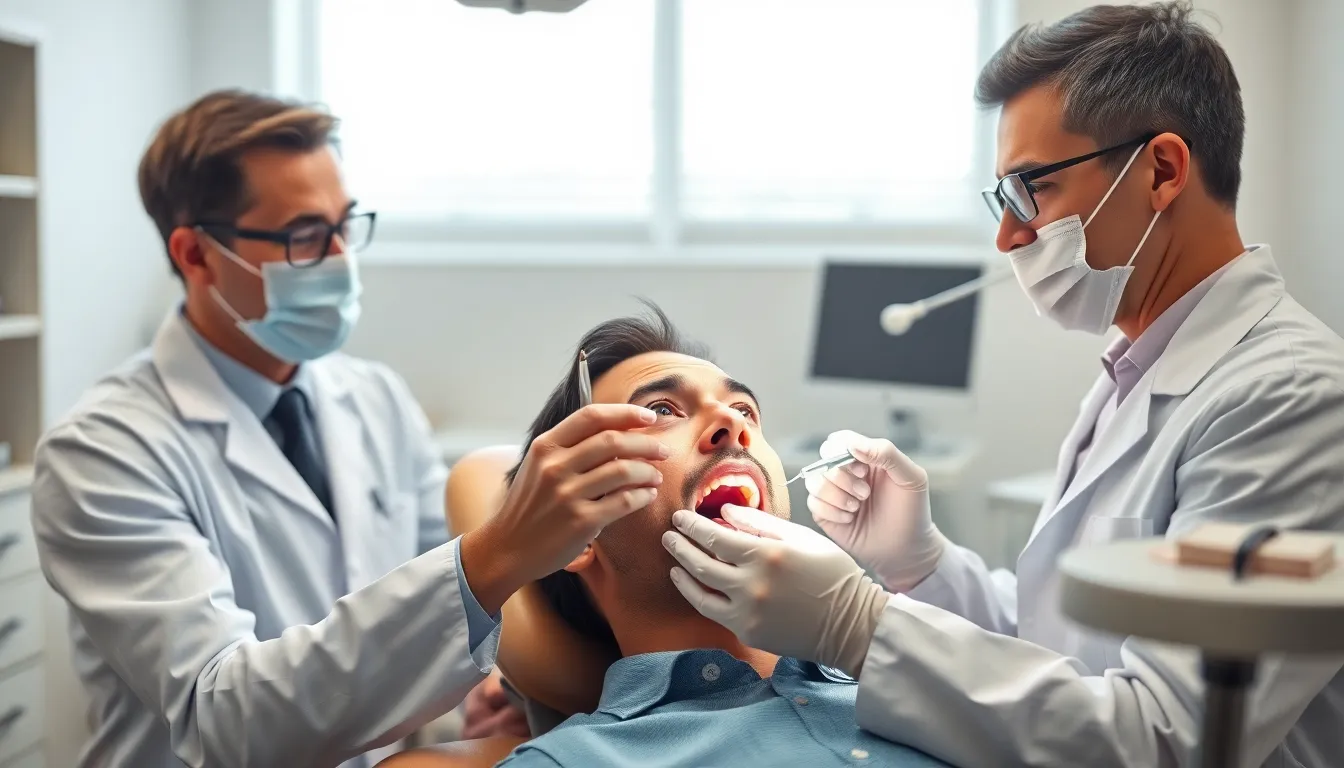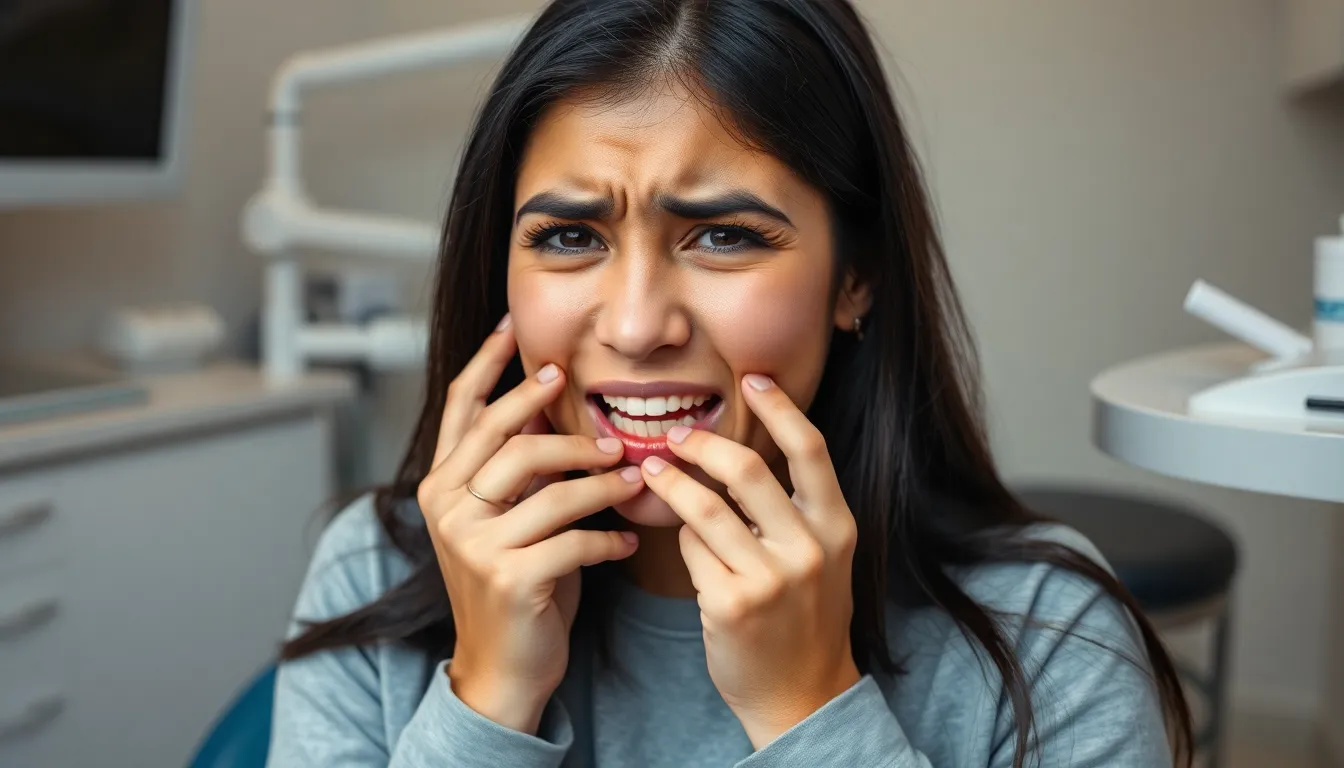Have you noticed your brackets becoming loose or causing discomfort? “Brackets mal cuidados” – poorly maintained braces – can lead to serious dental issues and extend your orthodontic treatment time unnecessarily.
When you don’t properly care for your braces, food particles get trapped between brackets and wires, leading to plaque buildup, tooth decay, and even gum disease. Your orthodontic investment requires consistent maintenance to achieve that perfect smile you’re working toward. Neglected brackets can also cause emergencies like broken wires or loose brackets that require immediate attention from your orthodontist.
Don’t let poor bracket maintenance derail your smile journey. With proper cleaning techniques and regular check-ups, you’ll protect both your dental health and your investment in orthodontic treatment.
Understanding Poorly Maintained Braces (Brackets Mal Cuidados)
Poorly maintained braces lead to a host of dental complications that extend beyond aesthetics. Dental brackets collect food particles and plaque in hard-to-reach areas around the metal components, creating perfect environments for bacteria growth. Orthodontic patients who neglect proper cleaning techniques often experience white spot lesions—permanent marks on tooth enamel that remain visible even after braces removal.
“I recently treated a teen who’d ignored her cleaning routine for months,” shares Dr. Todd B. Harris. “By the time she came in for her adjustment, important decalcification had already occurred around her brackets, requiring additional treatments beyond her orthodontic care.”
Brackets mal cuidados (poorly maintained braces) directly impact treatment duration. Patients typically wear braces for 18-24 months, but inadequate maintenance can extend this timeline by 6-12 additional months. Treatment delays occur when orthodontists must address complications from poor hygiene before continuing with planned tooth movement.
Gum inflammation represents another common consequence of neglected braces. Gingivitis develops rapidly around brackets when plaque accumulates at the gumline, causing bleeding, swelling, and discomfort during brushing. Left untreated, this condition can progress to periodontitis—a serious infection that damages the soft tissue and destroys the bone supporting your teeth.
The financial implications of poorly maintained braces extend beyond the initial investment in orthodontic treatment. Additional dental procedures to address decay or gum disease can cost $500-$2,000 per tooth, depending on severity. Preventive care through proper maintenance saves thousands in potential corrective treatments.
Common Signs of Neglected Orthodontic Braces
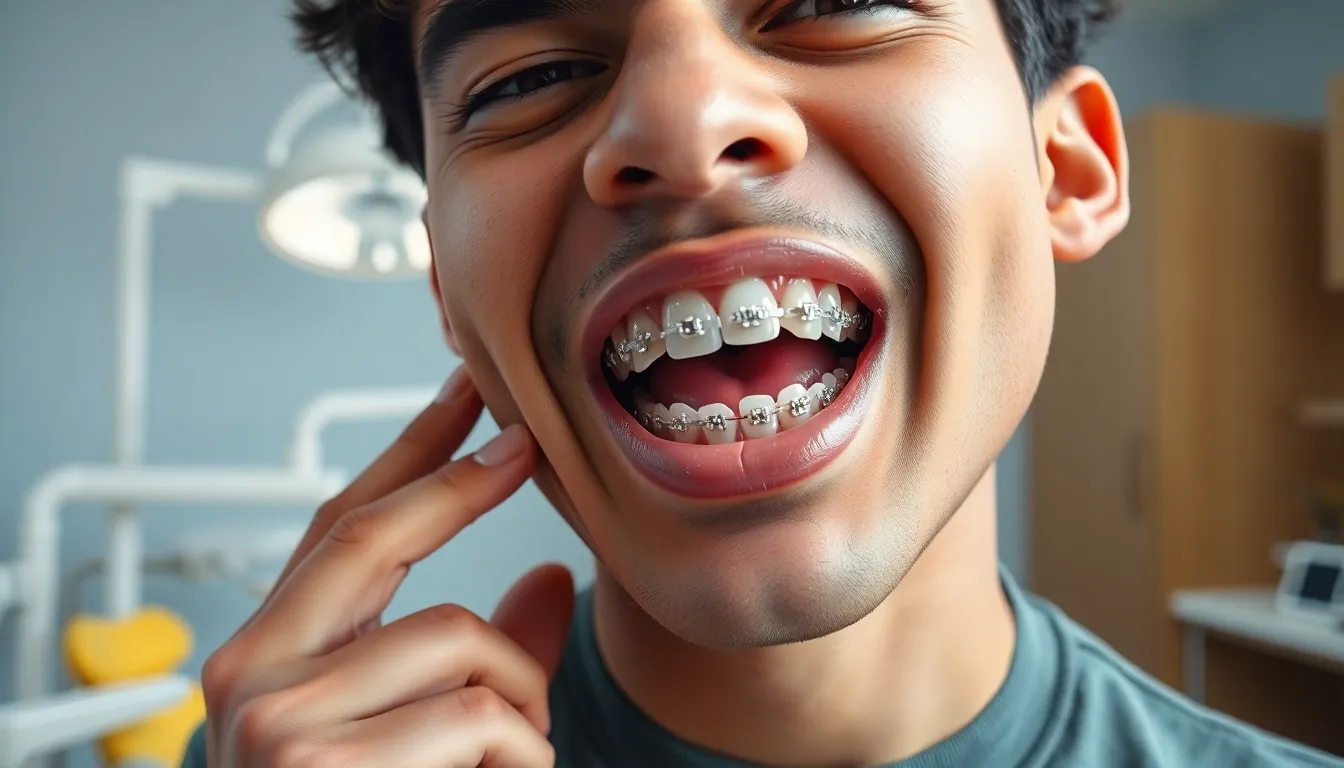
Neglected orthodontic braces (brackets mal cuidados) can lead to several complications that affect both your oral health and treatment effectiveness. Recognizing these warning signs early helps prevent long-term damage and treatment delays.
Plaque Buildup and Discoloration
Improper cleaning of braces creates the perfect environment for plaque accumulation around brackets and wires. This buildup appears as a white, sticky film on teeth surfaces and bracket edges. Over time, plaque causes noticeable white spots or yellowish staining on the tooth enamel, particularly in areas surrounding the brackets. These discolorations often remain visible even after braces removal, creating permanent cosmetic issues that require additional treatments.
Many patients don’t realize that brackets trap food particles much more easily than normal teeth. Dr. Todd B. Harris recalls, “One patient came in with severe white spot lesions after six months of inadequate cleaning. Even though our instructions, she hadn’t been using her interdental brushes, resulting in decalcification that required extensive cosmetic work after treatment.”
Loose or Broken Brackets
Brackets that detach from teeth surfaces or break completely disrupt the entire alignment process. You’ll notice a bracket has come loose when it slides along the wire or hangs from one side while the other side remains attached to the tooth. Completely dislodged brackets frequently result from eating hard foods like nuts, popcorn, or crunchy candies that orthodontists specifically advise against.
Loose brackets compromise treatment progress because teeth won’t move as planned when the appliance isn’t properly secured. For every month with a detached bracket, treatment time typically extends by 2-3 weeks. Patients experiencing loose brackets should collect any broken pieces and contact their orthodontist immediately for repairs rather than waiting until the next scheduled appointment.
Swollen, bleeding gums around bracket areas indicate potential infection or irritation from poor maintenance. Persistent pain beyond the normal discomfort after adjustments may signal wire displacement that could damage oral tissues and requires emergency attention.
Health Consequences of Improperly Cared For Braces
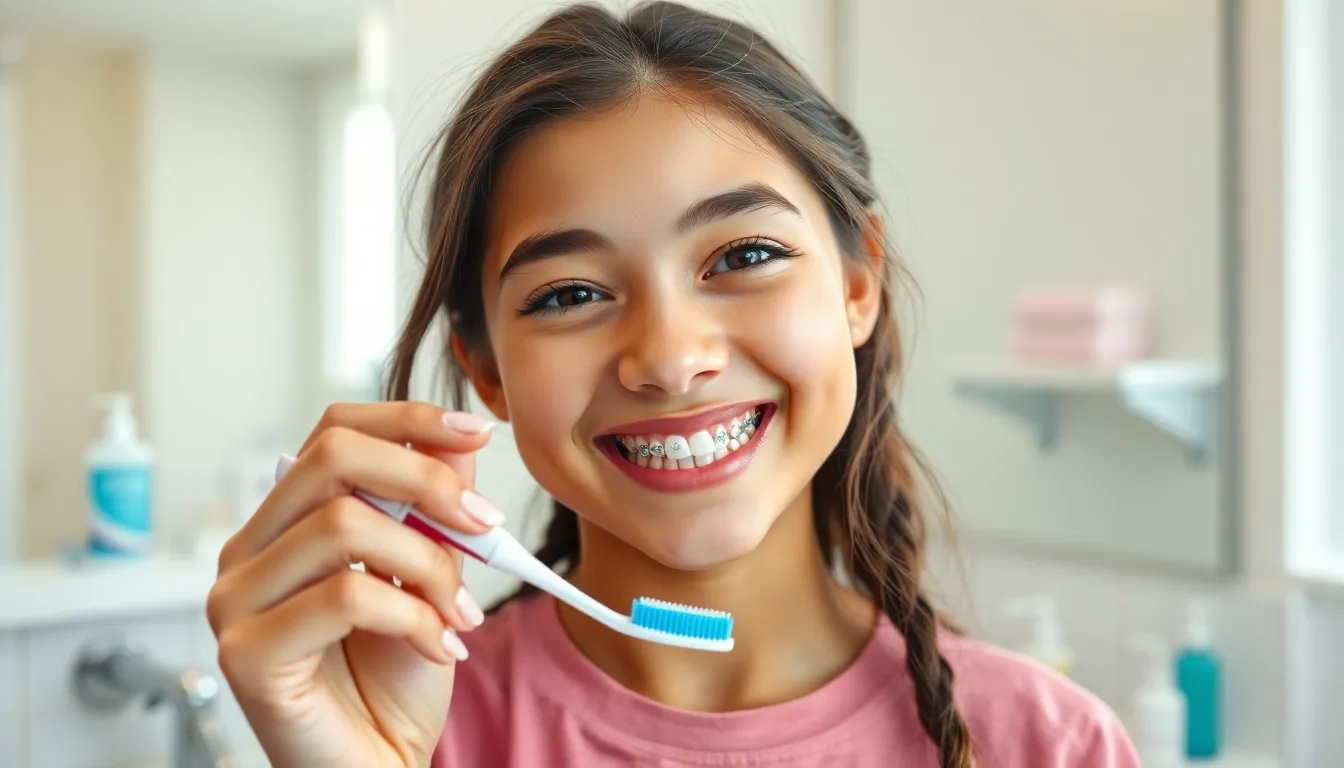
Neglecting proper care of your braces creates serious health risks that extend beyond just cosmetic concerns. Improper maintenance leads to complications that can affect both your treatment outcome and long-term oral health.
Dental Decay and Cavities
Brackets trap food particles and plaque in hard-to-reach areas around wires and brackets, creating ideal conditions for cavity development. These trapped particles produce acids that actively erode your tooth enamel, particularly in areas difficult to clean with standard brushing techniques. Research shows that patients with poorly maintained braces experience a 3-5 times higher risk of developing white spot lesions that can progress to full cavities. Food debris accumulates most commonly between brackets and gum lines, creating acidic environments that damage tooth structure within 24-48 hours if not properly cleaned.
Dr. Todd B. Harris notes, “I’ve treated many patients who required fillings in multiple teeth following orthodontic treatment simply because they didn’t maintain proper cleaning routines. One teenage patient developed eight cavities during her 18-month treatment because she skipped her water flosser routine, resulting in $1,800 in additional dental work.”
Gum Disease and Inflammation
Plaque buildup around brackets irritates gum tissue, triggering inflammation that manifests as redness, swelling, and bleeding. This initial inflammation (gingivitis) can progress to periodontitis if left untreated, potentially causing gum recession and exposure of sensitive tooth roots. Gum disease affects approximately 50% of patients who don’t follow recommended cleaning protocols for their braces. Advanced cases lead to bone loss around teeth, compromising tooth stability and potentially requiring periodontal treatment costing $800-$1,500 per quadrant.
The risk of developing gum disease increases dramatically after just 2-3 weeks of inadequate cleaning. Patients experiencing gum inflammation commonly report sensitivity while brushing and eating, often leading them to clean less thoroughly – creating a dangerous cycle that worsens the condition. Orthodontic treatment combined with poor oral hygiene creates unique challenges as brackets provide additional surfaces for bacteria to colonize and form biofilms resistant to casual brushing efforts.
Bracket-induced gum problems can cause complications that persist long after braces are removed, including permanent gum recession that exposes tooth roots and creates aesthetic concerns around the newly straightened teeth.
Proper Care Techniques for Orthodontic Braces
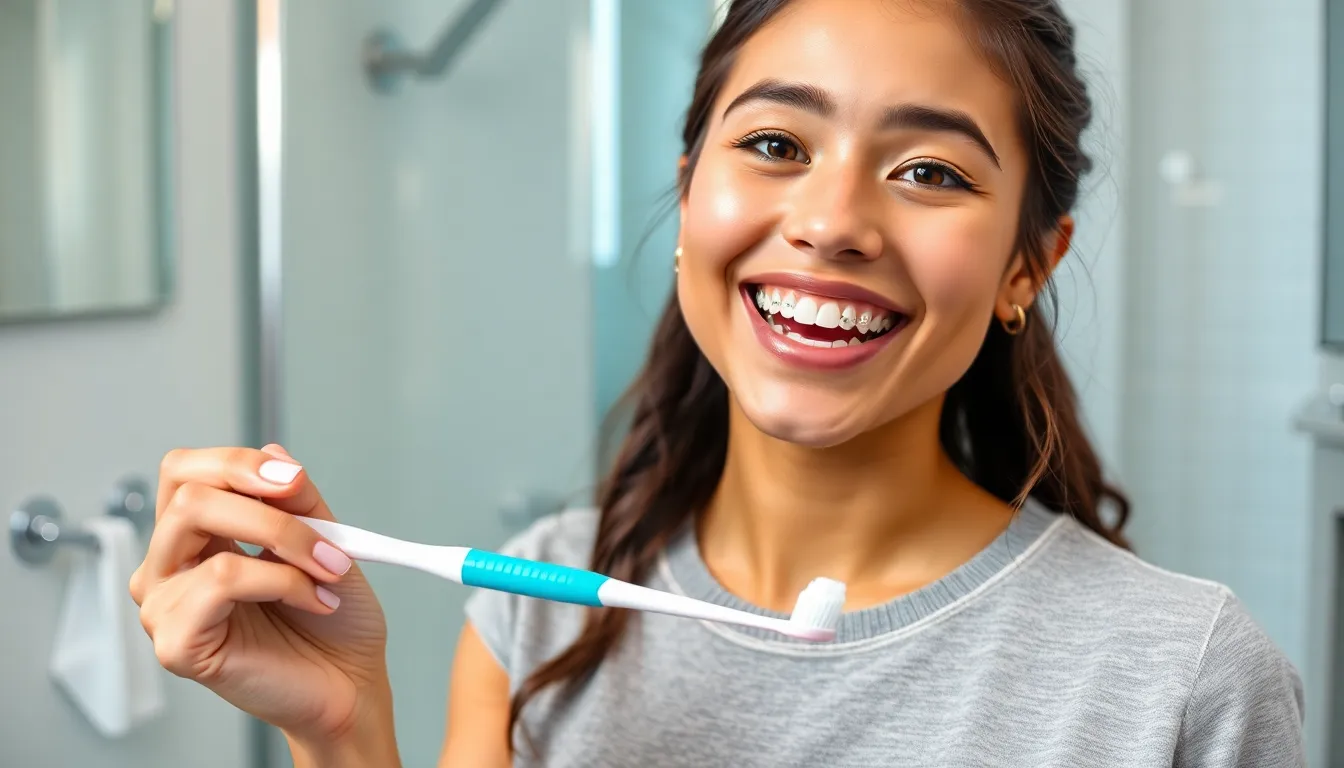
Maintaining orthodontic braces requires consistent attention to detail and specialized care routines. Proper maintenance not only preserves your oral health but also ensures your treatment progresses efficiently without costly delays or complications.
Effective Brushing and Flossing Methods
Brushing your teeth requires extra diligence when you have braces, with a minimum of two minutes twice daily using fluoride toothpaste. Position your soft-bristled or electric toothbrush at three different angles for complete cleaning: downward on top of brackets, upward underneath brackets, and directly against brackets with side-to-side motions. Circular brushing techniques help dislodge food particles from hard-to-reach areas around wires and brackets. Flossing daily becomes essential with braces, using specialized tools like floss threaders, interdental brushes, or water flossers to clean between teeth and under wires where food accumulates. Proxy brushes prove invaluable for cleaning tight spaces around brackets that regular brushes can’t reach effectively.
Dr. Todd B. Harris often shares, “I’ve seen countless patients transform their orthodontic experience simply by mastering proper brushing techniques. One patient reduced their treatment time by nearly three months after implementing a thorough cleaning routine using all three brushing positions.”
Foods to Avoid With Braces
Certain foods pose important risks to your orthodontic appliances and can extend your treatment timeline. Sticky substances like caramel, taffy, and chewing gum frequently pull brackets off teeth or bend wires out of alignment. Hard foods including nuts, popcorn, ice, and hard candies can damage brackets upon impact, potentially causing painful emergencies. Crunchy items such as raw carrots, apples, and corn on the cob shouldn’t be bitten directly—instead, cut these into small, manageable pieces that minimize pressure on your braces. Sugary foods and beverages create an environment for plaque buildup around brackets, increasing your risk of developing white spot lesions that can permanently mark your teeth after treatment completes.
Professional Maintenance and Regular Check-ups

Orthodontic treatment requires consistent professional oversight to ensure your braces function correctly and deliver optimal results. Your orthodontist uses specialized tools like panoramic x-rays, visual examinations, and dental impressions to monitor progress and make necessary adjustments throughout your treatment journey. These regular appointments, typically scheduled every 4-6 weeks, allow professionals to detect potential issues before they become serious complications.
Professional maintenance prevents severe malocclusions and skeletal disharmony that might otherwise require surgical intervention. During these check-ups, your orthodontist will tighten wires, replace bands, and evaluate your cleaning techniques to ensure you’re maintaining proper oral hygiene between visits.
Children and adults both benefit significantly from professional supervision to achieve proper alignment and a functional, healthy bite. Each appointment serves as an opportunity to address any concerns and make adjustments to your treatment plan based on how your teeth are responding to the orthodontic forces.
Dr. Todd B. Harris, a leading orthodontist with over 20 years of experience, shares: “I’ve seen countless patients transform their results simply by maintaining their scheduled appointments. One patient, Miguel, nearly extended his treatment by 8 months after missing several check-ups. Once he committed to regular visits, we were able to correct course and achieve excellent results without further complications.”
Skipping scheduled appointments can lead to treatment delays and potentially more costly interventions later. Professional oversight ensures that your brackets remain securely bonded, wires function properly, and treatment progresses according to plan. When combined with proper at-home care, these regular check-ups create the foundation for successful orthodontic outcomes and long-term oral health.
How to Fix Damaged or Neglected Braces
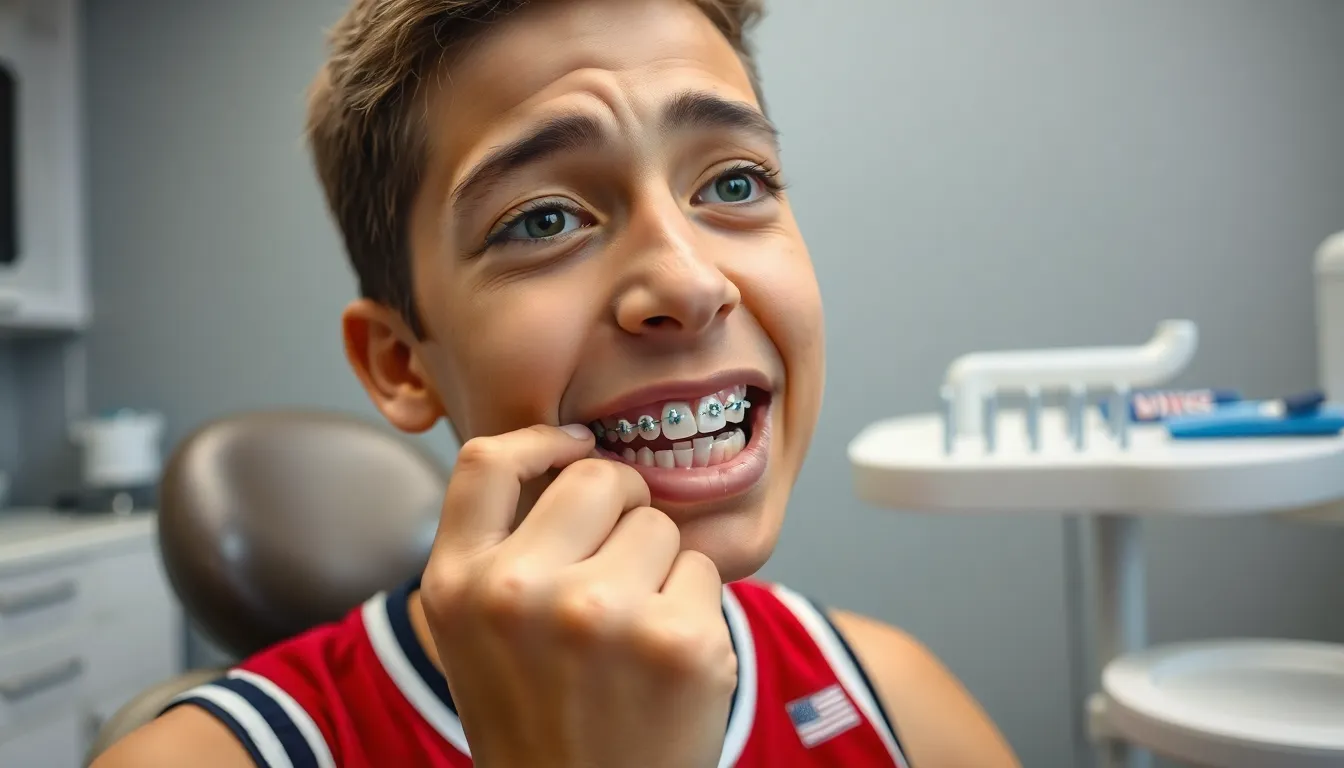
Causes and Effects of Damaged or Neglected Braces
Damaged braces occur from eating hard foods, experiencing trauma, practicing poor oral hygiene, or missing orthodontic appointments. These issues impair treatment progress and delay your perfect smile results. Brackets that become loose or broken create pressure points in your mouth, causing discomfort and potential infection when left unaddressed. Food particles trapped around neglected braces lead to plaque accumulation, increasing decay risks significantly.
Dr. Todd B. Harris notes, “I’ve seen patients extend their treatment by 6-8 months simply because damaged brackets weren’t reported promptly. One patient continued with a broken wire for weeks, causing his tooth to shift in the wrong direction, requiring additional corrective procedures.”
Immediate Steps to Take When Braces Are Damaged
Assess the damage by checking for broken brackets, loose wires, or areas causing discomfort inside your mouth. Apply orthodontic wax over sharp edges to reduce irritation and prevent soft tissue injuries. Brush gently around damaged areas and rinse with warm saltwater to minimize infection risks and soothe irritated tissues. Avoid manipulating your braces aggressively—though you can gently reposition a loose wire using a pencil eraser if it’s causing discomfort.
Maria, a 16-year-old patient, shares, “When my bracket broke during a basketball game, I immediately applied the orthodontic wax my orthodontist had given me. This simple step prevented painful cuts until I could get professional help the next day.”
Contact and Follow-Up with Orthodontist
Call your orthodontist immediately after noticing damage to receive professional guidance on next steps. Emergency appointments typically involve removing and replacing broken components while ensuring proper alignment for continued effective treatment. Orthodontists use specialized tools to correct issues that can’t be addressed at home, preventing further complications and treatment delays.
Professional repairs generally take 20-30 minutes depending on the extent of damage. Postponing necessary repairs extends treatment time by approximately 2-3 weeks for each month a bracket remains detached or improperly positioned.
Importance of Regular Braces Care and Adjustments
Regular orthodontic adjustments every 4-6 weeks maintain treatment momentum and prevent complications. Neglecting these appointments prolongs your overall treatment timeline, potentially adding months to your braces journey. Patients who maintain consistent adjustment schedules complete treatment 30% faster than those who frequently reschedule or miss appointments.
Conclusion
Taking care of your braces isn’t just about maintaining a beautiful smile—it’s about protecting your oral health and investment. Neglected brackets can lead to serious complications that extend beyond aesthetic concerns including tooth decay gum disease and treatment delays.
By implementing proper cleaning techniques avoiding problematic foods and keeping up with regular orthodontic appointments you’ll ensure your treatment progresses smoothly. Remember that each missed check-up or cleaning shortcut can add weeks or months to your treatment timeline.
Your commitment to bracket care now will reward you with a lifetime of healthy smiles later. Don’t let poor maintenance habits undermine your journey to perfect teeth—your future self will thank you for the extra effort today.
Frequently Asked Questions
What happens if I don’t properly maintain my braces?
Neglecting proper braces care can lead to serious dental issues including plaque buildup, tooth decay, and gum disease. You may develop white spot lesions on your tooth enamel and experience gum inflammation or gingivitis. Poor maintenance typically extends treatment time by 6-12 months and may require additional dental procedures costing between $500-$2,000 per tooth. Regular cleaning and check-ups are essential to protect both your dental health and investment.
How often should I brush my teeth with braces?
You should brush your teeth for at least two minutes, twice daily with fluoride toothpaste. Because braces create more places for food and plaque to hide, more frequent brushing (after meals) is highly recommended. Use a soft-bristled toothbrush and angle it to clean above and below brackets. Consider adding specialized orthodontic brushes to your cleaning routine for more effective plaque removal around brackets and wires.
What foods should I avoid while wearing braces?
Avoid sticky foods (caramel, gum, taffy), hard foods (nuts, hard candy, ice), and crunchy items (popcorn, chips) as these can damage brackets and wires. Minimize consumption of sugary foods and beverages which contribute to plaque buildup and increase cavity risk. Cut tough foods like apples and carrots into smaller pieces. Following these restrictions helps prevent emergency visits and ensures your treatment stays on schedule.
How often should I visit my orthodontist for check-ups?
Visit your orthodontist every 4-6 weeks for adjustments and professional monitoring. These regular appointments are crucial for ensuring treatment progresses as planned. During these visits, your orthodontist uses specialized tools to check bracket integrity, make necessary wire adjustments, and address any developing issues. Skipping appointments can significantly delay treatment completion and potentially lead to more costly interventions later.
What are the signs that my braces need attention?
Key warning signs include visible plaque buildup or discoloration around brackets, loose or broken brackets/wires, persistent food trapping, and swollen or bleeding gums. You might also experience unusual discomfort beyond normal adjustment pain or notice that your teeth aren’t moving as expected. If you observe any of these signs, contact your orthodontist promptly rather than waiting for your next scheduled appointment.
What should I do if a bracket breaks or comes loose?
If a bracket breaks or becomes loose, first apply orthodontic wax to prevent irritation to your cheeks and gums. Don’t attempt to fix it yourself. Contact your orthodontist immediately to schedule a repair appointment, as each month a bracket remains detached can extend treatment time by 2-3 weeks. Meanwhile, avoid foods that might cause further damage and maintain careful brushing to prevent decay around the affected area.
Can neglected braces cause permanent damage to my teeth?
Yes, neglected braces can cause permanent damage. Poor hygiene while wearing braces increases the risk of developing white spot lesions (early decay) by 3-5 times, which can remain visible even after braces removal. Neglect can also lead to cavities requiring fillings, root canals, or even extractions. Additionally, untreated gum inflammation can progress to periodontitis, potentially causing irreversible bone and tooth loss.
Is flossing really necessary with braces?
Absolutely. Flossing with braces is essential despite being more challenging. Brackets and wires create numerous spaces where food particles and plaque can accumulate beyond the reach of brushing alone. Use floss threaders, orthodontic flossers, or water flossers daily to clean between teeth and under wires. Without flossing, you significantly increase your risk of cavities between teeth and gum disease during treatment.



